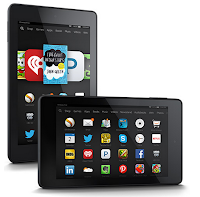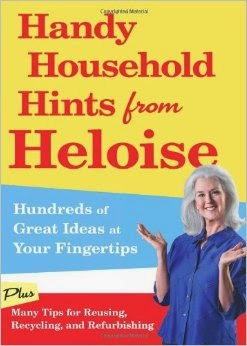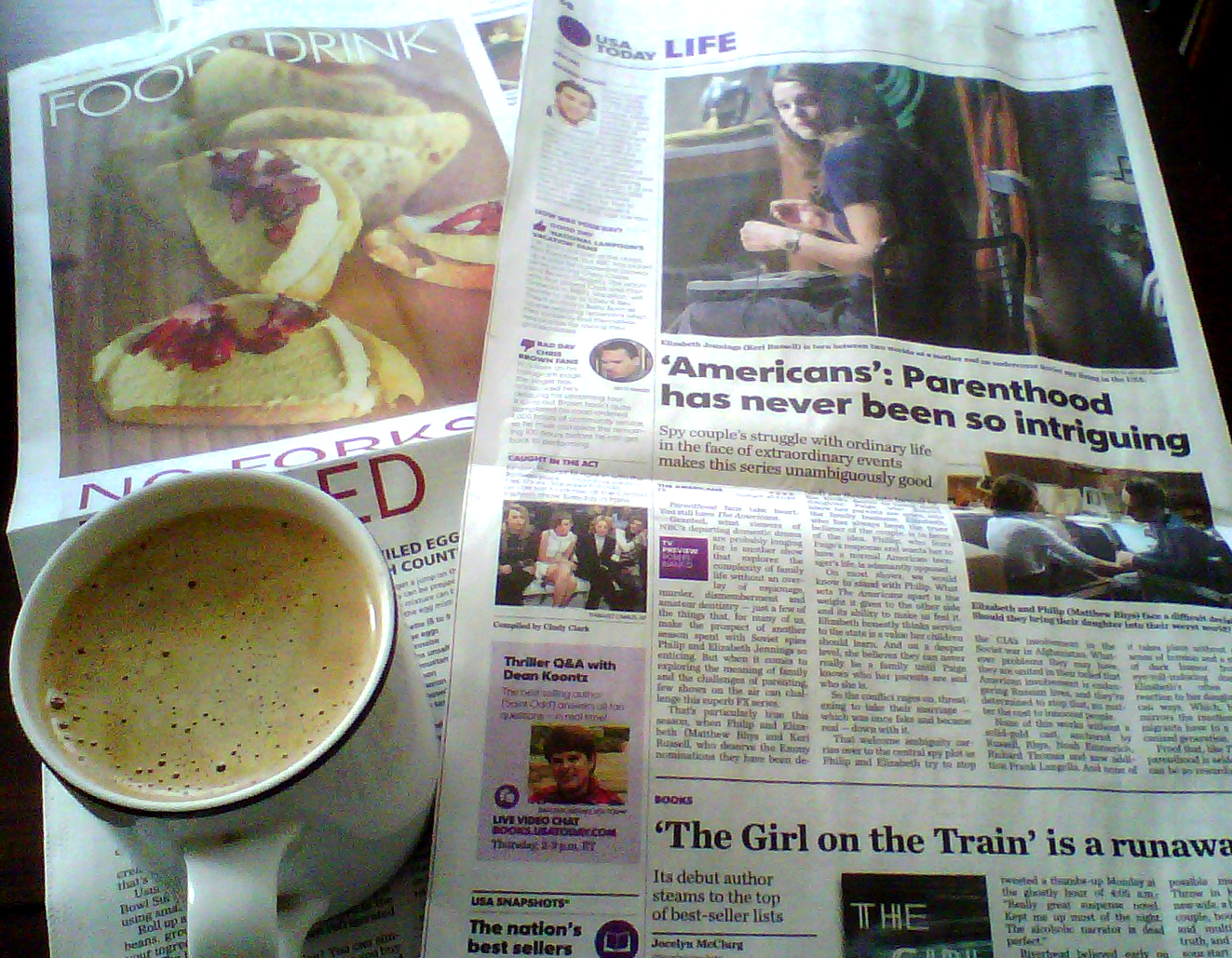The very best thing I've bought in the last six months is a 6-inch Amazon Fire tablet. I find myself using it for so many different things! After doing a lot of price and feature comparisons, I consider it far and away the most cost effective tablet device available, especially for someone who uses Amazon a lot and/or is a Prime subscriber.
I watch TV shows and the occasional movie, almost exclusively on my Fire via streaming video from various sources (I've successfully used it with Amazon Prime, Hulu, Xfinity, Netflix, Youtube, and PBS). The case allows me to stand it up for hands-free watching, but I usually hold it. The picture quality is excellent.
I listen to all kinds of podcasts and out-of-my-area radio programs, mostly while knitting. There are free apps that will allow you to stream or download all kind of audio content. I personally use Beyondpod for podcasts and IHeartRadio for radio programs (both free) , but there are many other good apps for these functions.
I search for and read things on the internet, even doing some shopping. If you're as big an Amazon shopper as I've become, it's very easy to use a Fire to place or check on orders, or to do some browsing.
I read books from my rather large Amazon collection, and from the (free) Overdrive collection available through my library, and more free books from the Gutenberg Project collection (non-copyrighted classics). I listen to audiobooks - purchased in the past from Audible (I no longer have a subscription), free from Overdrive, and also free through Librivox (more non-copyrighted classics).
If you're an Amazon Prime subscriber, the Fire is particularly good for streaming music. They offer a huge collection of music of all kinds that you can stream or download for free. They have many good playlists, too, but I find the Google Music playlists quite a bit better, frankly.
Less traditionally, I use the Fire as an MP3 player. It's small enough to fit in most of my pants and coat pockets, or in my small handbag, so when I'm going to be out walking or using public transportation I just download a few podcasts or recorded books to listen to. Or for walking for exercise, I like to download a playlist from Amazon Prime music. As mentioned above, I don't find a lot of playlists I like there, but since they do have tons of good music, I just put together my own playlists and then download a few for use away from wifi. My old 7-inch Fire was just a bit too big and heavy to use this way, but the 6-inch is great. The battery died in my old Sansa MP3 player, but I won't need to replace it.
I've discovered that the Fire - amazingly - works pretty well as a phone, too. I have a phone number through Skype, along with unlimited calling in the US and Canada (a frugal $5.15 per month for everything), so using that number I can both make and receive regular phone calls. I bought a headset (earphones plus microphone) designed for the Fire's single-plug input, and with that the call quality is usually superb. The Kindle works well for video calls, too... better than my Android tablet.
The Fire now has both a front and back camera. The front one is good for those Skype video calls. But I've also been taking pictures with the back camera and they're pretty good! Better than my phone, and because the Fire 6 is so small, I often have it with me. I usually share photos to Dropbox and then upload to my favored photo storage, which is Google. By the way, although Dropbox is not available in the Kindle app store, you can easily download and install it from the Dropbox website - it works perfectly on the Fire and is a good way to transfer photos and documents from one device to another.
Finally, since it's so portable, I have fallen into using the Fire as my alarm clock. The alarm is fast and easy to set. I bought the "official" case (highly recommended), so when I open the case the Fire automatically "wakes up" and shows me the time. When I close it, it turns off... a big battery-saver. I'm trying to learn to live without a wristwatch, so I often set an alarm for 5 minutes before I need to leave or do something. The clock/alarm app I use (free) is very fast and easy to set.
They offer a 7-inch Fire now for an unbelievable $49, not a bad choice, but I chose to go with the 6-inch. First, the sound is a lot better. I use my Fire for virtually all my TV show-watching, as well as for video and voice calls, and the sound makes a big difference to me. I just don't like to have to always wear earphones. Second, I wanted the 16 GB internal storage, which is not available in the 7-inch, although this cheaper model does allow you to add an SD card to increase storage. I wish my 6-inch had that, but the sound outweighed the storage issue. 16 GB meets my needs since I keep most stuff in the cloud.
I shouldn't have worried about the smaller size... in fact, I find it preferable! It's lighter and easier to hold for reading. I learned that the 6- and 7-inch Fires each have the same total number of pixels, so the 6-inch appears a bit sharper, higher-resolution than the 7-inch. Pictures are gorgeous, print sharp and clear. The only reason to go with a larger, higher-resolution tablet (for lots more money) would be if you are far-sighted and it's not well-corrected.
And with the smaller size, I can stick it in my pocket or my little mini-purse and use it as an MP3 player, as mentioned above. It makes up for not having sprung for an expensive smart phone (still using my faithful old Blackberry Curve.) The Fire needs wifi for most things, but wifi seems to be everywhere now!
My Fire 6 16 GB With Special Offers was $119. The "special offers" are limited, inoffensive ads you see here and there. No way are they annoying enough to justify spending any money to eliminate them.
The case I use is the Amazon Standing Protective Case for Fire 6. At $24.99 it seemed a little pricey, but I've found it well worth the cost. It has the magnetic feature that allows opening the case to turn the tablet on and off, a big advantage in doing things like doing a quick check of the time or notifications. You can listen to your audio with the case closed, and the volume-adjust buttons work nicely even when the case is closed. I got the red, but I'd get a darker color next time. I've had to scrub it because it gets dirty more easily than I'd like.
I like this Headset for Kindle Fire, Chromebook, Android, etc. quite a bit. At $19.99 it was a good buy, and handy to use for voice communication on my Kindle (as well as my Chromebook and Android tablet). You can spend way, way more for headsets, but this one works just fine. It also gives me good sound when I have to use it for streaming video that, for some reason, is set at too low a volume to hear well, notably PBS Masterpiece Theater shows (free, and there's a nice Kindle app, too.)
What I Do with My Fire
I've been amazed at how much I do with my Fire. It synchs with my Gmail and Google Calendar, so I can use it to check email and to enter or check appointments. It's really handy to check the weather. I like the Radar Express app (free) for seeing the current radar - can we squeeze in a walk before the rain starts? And the (free) Accuweather app is good for daily forecasts and weather news, including very good local weather news videos. I use the TV Listings app (free) to see what's on the tube. There's a decent calculator. And tons of other apps for whatever you want or need to do. Plus... games.I watch TV shows and the occasional movie, almost exclusively on my Fire via streaming video from various sources (I've successfully used it with Amazon Prime, Hulu, Xfinity, Netflix, Youtube, and PBS). The case allows me to stand it up for hands-free watching, but I usually hold it. The picture quality is excellent.
I listen to all kinds of podcasts and out-of-my-area radio programs, mostly while knitting. There are free apps that will allow you to stream or download all kind of audio content. I personally use Beyondpod for podcasts and IHeartRadio for radio programs (both free) , but there are many other good apps for these functions.
I search for and read things on the internet, even doing some shopping. If you're as big an Amazon shopper as I've become, it's very easy to use a Fire to place or check on orders, or to do some browsing.
I read books from my rather large Amazon collection, and from the (free) Overdrive collection available through my library, and more free books from the Gutenberg Project collection (non-copyrighted classics). I listen to audiobooks - purchased in the past from Audible (I no longer have a subscription), free from Overdrive, and also free through Librivox (more non-copyrighted classics).
If you're an Amazon Prime subscriber, the Fire is particularly good for streaming music. They offer a huge collection of music of all kinds that you can stream or download for free. They have many good playlists, too, but I find the Google Music playlists quite a bit better, frankly.
Less traditionally, I use the Fire as an MP3 player. It's small enough to fit in most of my pants and coat pockets, or in my small handbag, so when I'm going to be out walking or using public transportation I just download a few podcasts or recorded books to listen to. Or for walking for exercise, I like to download a playlist from Amazon Prime music. As mentioned above, I don't find a lot of playlists I like there, but since they do have tons of good music, I just put together my own playlists and then download a few for use away from wifi. My old 7-inch Fire was just a bit too big and heavy to use this way, but the 6-inch is great. The battery died in my old Sansa MP3 player, but I won't need to replace it.
I've discovered that the Fire - amazingly - works pretty well as a phone, too. I have a phone number through Skype, along with unlimited calling in the US and Canada (a frugal $5.15 per month for everything), so using that number I can both make and receive regular phone calls. I bought a headset (earphones plus microphone) designed for the Fire's single-plug input, and with that the call quality is usually superb. The Kindle works well for video calls, too... better than my Android tablet.
The Fire now has both a front and back camera. The front one is good for those Skype video calls. But I've also been taking pictures with the back camera and they're pretty good! Better than my phone, and because the Fire 6 is so small, I often have it with me. I usually share photos to Dropbox and then upload to my favored photo storage, which is Google. By the way, although Dropbox is not available in the Kindle app store, you can easily download and install it from the Dropbox website - it works perfectly on the Fire and is a good way to transfer photos and documents from one device to another.
Finally, since it's so portable, I have fallen into using the Fire as my alarm clock. The alarm is fast and easy to set. I bought the "official" case (highly recommended), so when I open the case the Fire automatically "wakes up" and shows me the time. When I close it, it turns off... a big battery-saver. I'm trying to learn to live without a wristwatch, so I often set an alarm for 5 minutes before I need to leave or do something. The clock/alarm app I use (free) is very fast and easy to set.
Why I Decided on the 6-Inch Fire
When my old 7-inch Kindle Fire stopped working, I was super-annoyed, but last August I decided to replace it with another Fire. Amazon has so many versions now, but I read all the specs and decided to take the plunge with a smaller, 6-inch version at $119. And I'm so glad I did!They offer a 7-inch Fire now for an unbelievable $49, not a bad choice, but I chose to go with the 6-inch. First, the sound is a lot better. I use my Fire for virtually all my TV show-watching, as well as for video and voice calls, and the sound makes a big difference to me. I just don't like to have to always wear earphones. Second, I wanted the 16 GB internal storage, which is not available in the 7-inch, although this cheaper model does allow you to add an SD card to increase storage. I wish my 6-inch had that, but the sound outweighed the storage issue. 16 GB meets my needs since I keep most stuff in the cloud.
I shouldn't have worried about the smaller size... in fact, I find it preferable! It's lighter and easier to hold for reading. I learned that the 6- and 7-inch Fires each have the same total number of pixels, so the 6-inch appears a bit sharper, higher-resolution than the 7-inch. Pictures are gorgeous, print sharp and clear. The only reason to go with a larger, higher-resolution tablet (for lots more money) would be if you are far-sighted and it's not well-corrected.
And with the smaller size, I can stick it in my pocket or my little mini-purse and use it as an MP3 player, as mentioned above. It makes up for not having sprung for an expensive smart phone (still using my faithful old Blackberry Curve.) The Fire needs wifi for most things, but wifi seems to be everywhere now!
Bottom Line
For a total outlay of about $164, I have a complete entertainment and communication system that is extremely functional, including a good-quality case and headset. Here's what I got, if you're curious:My Fire 6 16 GB With Special Offers was $119. The "special offers" are limited, inoffensive ads you see here and there. No way are they annoying enough to justify spending any money to eliminate them.
The case I use is the Amazon Standing Protective Case for Fire 6. At $24.99 it seemed a little pricey, but I've found it well worth the cost. It has the magnetic feature that allows opening the case to turn the tablet on and off, a big advantage in doing things like doing a quick check of the time or notifications. You can listen to your audio with the case closed, and the volume-adjust buttons work nicely even when the case is closed. I got the red, but I'd get a darker color next time. I've had to scrub it because it gets dirty more easily than I'd like.
I like this Headset for Kindle Fire, Chromebook, Android, etc. quite a bit. At $19.99 it was a good buy, and handy to use for voice communication on my Kindle (as well as my Chromebook and Android tablet). You can spend way, way more for headsets, but this one works just fine. It also gives me good sound when I have to use it for streaming video that, for some reason, is set at too low a volume to hear well, notably PBS Masterpiece Theater shows (free, and there's a nice Kindle app, too.)


















